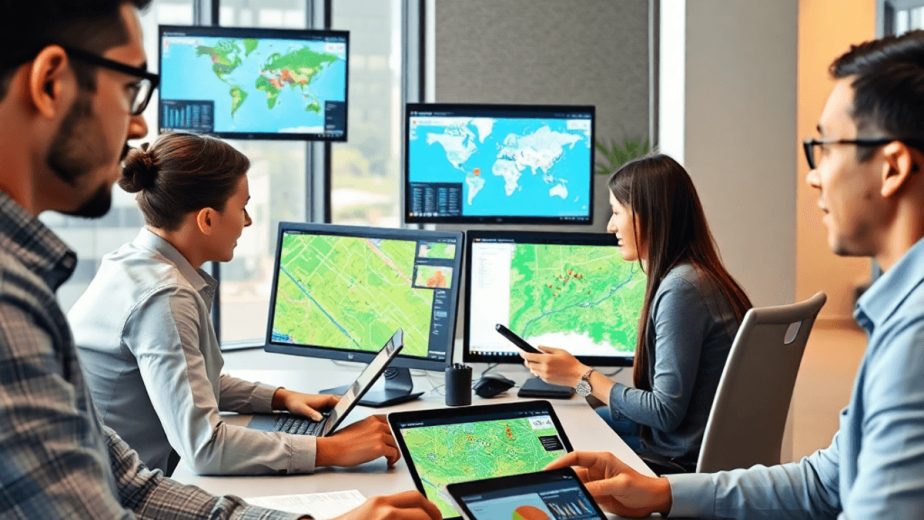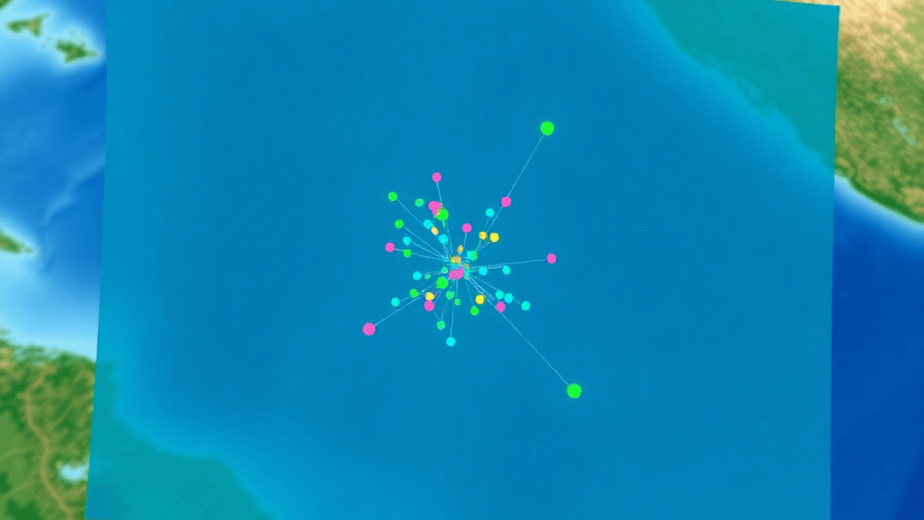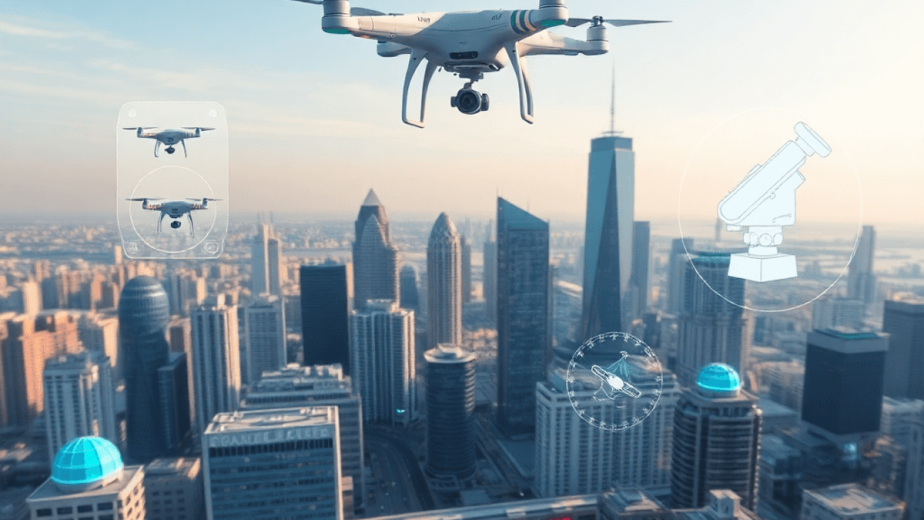Real-time 3D technology is transforming how industries handle inspections, employee training, and decision-making. By using advanced digital tools, organizations can improve their operations and perform better. In this article, we’ll explore the significant impact of real-time 3D in various fields, highlighting the major shifts it brings to conventional processes. We’ll also discuss how this groundbreaking technology is redefining business practices and helping companies thrive in today’s ever-changing environment.
Understanding Real-Time 3D Technology
Real-time 3D technology focuses on creating dynamic, interactive virtual models that replicate physical assets and environments. A key element in this field is the idea of digital twins—exact virtual copies of real-world objects or systems. These digital twins enable you to monitor asset conditions, simulate scenarios, and predict outcomes without physically interacting with the actual equipment. Industries such as manufacturing, energy, and construction widely use digital twins for maintenance planning, performance optimization, and risk assessment.
How Digital Twins Work
Digital twins work by using data from sensors and other sources to create a real-time representation of an asset or system. This information is then used to update the virtual model continuously, allowing for accurate monitoring and analysis.
Benefits of Digital Twins
- Improved maintenance planning: By analyzing data from the digital twin, organizations can identify potential issues before they occur and schedule maintenance accordingly.
- Enhanced performance optimization: The virtual model allows for testing different scenarios and identifying ways to improve efficiency and productivity.
- Better risk assessment: With a digital twin, organizations can simulate various situations and understand how their assets or systems would respond, helping them make informed decisions about risk management.
Mixed Reality’s Role in Real-Time 3D Technology
Mixed reality (MR) takes this experience further by combining real-world elements with virtual objects in a single immersive environment. Unlike pure virtual reality, MR enables you to interact with both physical and digital components simultaneously. This capability creates more intuitive training modules and inspection processes by overlaying detailed 3D information onto actual workspaces.
Example of Mixed Reality in Action
For instance, a technician wearing MR glasses can see step-by-step repair instructions directly on the machinery they are servicing, reducing errors and downtime.
The Importance of Extended Reality Devices
Extended reality (XR) devices—including virtual reality (VR) headsets and augmented reality (AR) glasses)—serve as the hardware foundation for accessing these immersive experiences. VR headsets fully immerse users in a computer-generated 3D world, ideal for simulations where complete environmental control is necessary. AR glasses overlay digital content on the physical world, enabling seamless interaction with both realms without losing situational awareness.
How XR Devices Transform Operations
These devices make it possible to engage with complex datasets visually and spatially, transforming how inspections, training sessions, and decision-making processes happen on the ground. The implementation of virtual reality (VR), augmented reality (AR), and mixed reality (MR) technologies is revolutionizing design and construction processes by providing immersive experiences that enhance understanding and efficiency.
The Power of Combining Technologies
When combined, digital twins powered by mixed reality environments accessed through XR devices create a powerful ecosystem. This ecosystem supports not only realistic visualization but also real-time data interaction—giving you actionable insights that drive precision and efficiency across operations.
Transforming Inspections with Real-Time 3D Tools
The DataMesh Checklist is an advanced inspection tool that uses real-time 3D technology to greatly improve the speed and accuracy of equipment inspections. With this innovative tool, inspectors can now explore virtual models of assets in incredible detail, allowing for comprehensive evaluations and precise identification of problems.
Benefits of Real-Time 3D Inspections
- Enhanced Defect Detection: By using real-time 3D visualization, inspectors can identify defects or abnormalities more effectively compared to traditional methods.
- Faster Decision-Making: The ability to see assets in three dimensions and interact with them virtually leads to quicker decision-making processes.
- More Reliable Results: The combination of detailed visualizations and expert assessments ensures that inspection outcomes are more reliable.
The Role of Remote Support in Inspections
In the world of inspections, remote support is crucial when it comes to using real-time 3D technology. It allows experts to provide guidance and assistance from anywhere in the world, promoting collaborative problem-solving and knowledge sharing.
Advantages of Remote Support
- Expedited Inspection Process: With remote support, experts can quickly address any issues or questions that arise during an inspection, reducing downtime and speeding up the overall process.
- Access to Expertise: Regardless of geographical limitations, inspections can benefit from the expertise of specialists who may not be physically present on-site.
- Cost Savings: By minimizing travel requirements for experts, remote support can lead to significant cost savings for organizations conducting inspections.
Enhancing Inspections with AI-Driven Guidance
Another key aspect of improving inspection outcomes is the integration of AI-driven guidance. This intelligent system analyzes historical data and patterns to provide proactive recommendations during inspections.
Benefits of AI-Driven Guidance
- Informed Decision-Making: Inspectors receive valuable insights based on past experiences and trends, enabling them to make better decisions on-site.
- Efficiency Gains: By automating certain aspects of the inspection process through AI algorithms, time-consuming tasks can be completed more quickly.
- Continuous Improvement: The feedback loop created by combining human expertise with AI insights allows for ongoing refinement and enhancement of inspection practices.
The Impact of Real-Time 3D Technology on Inspections
These advancements brought about by real-time 3D technology are truly transforming inspections across various industries.
Key Changes in Inspection Processes
- Data Collection Revolutionized: Instead of relying solely on written reports or static images, inspectors now have access to dynamic visualizations that capture every detail.
- Analysis Made Easier: Advanced software tools enable inspectors to analyze large volumes of data efficiently, identifying trends or anomalies that may require further investigation.
- Decision-Making Empowered: With all relevant information at their fingertips – including visual evidence, expert opinions, and historical context – decision-makers can make informed choices about asset management strategies.
Real-time 3D technology is reshaping how inspections are conducted by introducing new ways of gathering information, interpreting findings, and making decisions.
Transforming Employee Training through Immersive Experiences
Creating Interactive MR Training Content with Real-Time 3D Technology
Real-time 3D technology is revolutionizing employee training by enabling the creation of interactive mixed reality (MR) training content. This innovative approach allows learners to practice skills in realistic scenarios, bridging the gap between theoretical knowledge and practical application.
With real-time 3D, training modules can be designed to simulate complex environments or specific job tasks. For example, a construction company could develop an MR training program that immerses workers in a virtual building site, where they can learn about safety protocols and equipment operation without any risks involved.
Accessibility Across Multiple Devices for Flexible Learning Delivery
One of the key advantages of this new era of employee training is its accessibility across multiple devices. Unlike traditional methods that often require specialized equipment or dedicated training rooms, MR content powered by real-time 3D can be accessed on various devices such as smartphones and tablets.
This flexibility opens up opportunities for organizations to deliver training at scale and accommodate different learning preferences. Employees can engage with the material anytime, anywhere – whether during downtime at work or while commuting – making it easier to fit learning into their busy schedules.
Leveraging Virtual Machines for Safe Experimentation and Cost-Effective Simulations
In addition to enhancing engagement through immersive experiences, real-time 3D technology also offers benefits when combined with virtual machines in employee training programs.
Virtual machines provide a controlled environment where learners can experiment without fear of causing damage or incurring costs associated with physical resources. For instance, in industries like manufacturing or aviation, trainees can practice operating machinery or aircraft systems virtually before stepping into real-world operations.
This combination of safe experimentation and cost-effective simulations not only accelerates skill acquisition but also reduces potential errors during critical tasks – ultimately leading to improved performance outcomes.
By embracing these advancements brought about by real-time 3D technologies, companies have an opportunity to transform their approach towards employee training. The ability to create interactive MR content accessible on multiple devices while leveraging virtual machines for safe practice has the potential to enhance learning effectiveness and drive better results in various industries.
Empowering Data-Driven Decision-Making with Accurate Digital Representations
Data-driven decision-making is critical in today’s fast-paced business environment. Timely insights can differentiate between seizing an opportunity and falling behind competitors. Real-time 3D technology plays a crucial role in this by delivering precise, up-to-date digital representations of physical assets, enabling leaders to make informed choices quickly.
Key advantages of real-time 3D for decision-making include:
- Real-time monitoring: Continuous visualization of equipment status allows you to identify anomalies as they happen. This reduces downtime risks and supports swift intervention.
- Predictive maintenance analytics: By analyzing historical and current data within digital twins, predictive models forecast potential failures before they occur. This proactive approach optimizes maintenance schedules and extends asset lifespan.
- Enhanced equipment reliability: Accurate 3D models combined with sensor data provide deeper insights into operational conditions. This helps you pinpoint inefficiencies or deterioration that may not be visible through traditional inspections.
- Improved resource allocation: Decisions regarding workforce deployment, spare parts inventory, and repair priorities benefit from the clarity provided by real-time 3D environments.
Consider a manufacturing plant where machinery health is constantly tracked via digital twins integrated with IoT sensors. Maintenance teams receive alerts generated from AI-powered analysis, allowing them to address issues early. The result is fewer unexpected breakdowns and reduced repair costs — a direct impact on productivity and profitability.
DataMesh’s approach exemplifies how combining accurate digital representations with advanced analytics drives smart decision-making processes. You gain not just static visuals but actionable intelligence that evolves alongside your operations.
This capability transforms raw data into strategic insights, empowering you to optimize equipment reliability while maintaining operational agility.
Case Study: Foxconn’s Integration of Apple Vision Pro XR Devices for Factory Operations Digitization
Overview of Foxconn’s Use of DataMesh FactVerse Software and Apple Vision Pro XR Devices
Foxconn, a leading electronics manufacturer, has embraced cutting-edge technology to digitize its factory operations effectively. By utilizing DataMesh FactVerse software in conjunction with Apple Vision Pro XR devices, Foxconn has revolutionized its approach to streamlining production processes and enhancing operational efficiency.
Benefits Realized by Foxconn Through Integration of Digital Twin Platforms with XR Devices
The integration of digital twin platforms with XR devices has yielded significant benefits for Foxconn.
- Enhanced Productivity: Real-time 3D models generated by the digital twin technology coupled with the immersive experience provided by Apple Vision Pro XR devices have optimized workflow efficiency, leading to increased productivity on the factory floor.
- Reduced Downtime: By leveraging real-time monitoring capabilities and predictive maintenance analytics offered by this advanced technology stack, Foxconn has minimized equipment downtime and improved maintenance planning, resulting in cost savings and enhanced operational uptime.
By embracing real-time 3D technology through the integration of DataMesh FactVerse software and Apple Vision Pro XR devices, Foxconn has set a new standard for digital transformation in factory operations. The seamless synergy between digital twins and extended reality devices has enabled Foxconn to achieve unmatched levels of operational excellence and innovation in the manufacturing industry.
Exploring Applications in the Nuclear Power Sector: LiDAR Scanning Technologies for Creating Detailed Digital Twins of Critical Assets
LiDAR scanning technologies are essential for improving real-time 3D applications in the nuclear power industry. These technologies make it possible to create highly detailed digital twins of important assets like reactors, cooling systems, and containment structures. By capturing precise spatial data with millimeter accuracy, LiDAR provides a complete virtual replica that meets various operational requirements.
Key advantages of using LiDAR in this context include:
- Condition Monitoring: Continuous and precise tracking of asset conditions allows early detection of wear, corrosion, or deformation. This proactive approach mitigates risks associated with unexpected failures and enhances safety protocols.
- Maintenance Planning: Digital twins built from LiDAR scans facilitate better scheduling of maintenance activities. Engineers can virtually inspect areas difficult or unsafe to access physically, reducing downtime and avoiding costly disruptions.
- Enhanced Inspection Accuracy: Real-time 3D inspection processes benefit significantly from LiDAR data. Inspectors rely on detailed visualizations to identify anomalies that might be missed through traditional methods. This improves both reliability and thoroughness.
- Training Simulations: Employee training programs leverage these digital twins to create immersive scenarios replicating real-world challenges inside nuclear facilities. Learners gain hands-on experience with complex equipment without exposure to hazardous environments.
LiDAR’s integration into nuclear operations demonstrates how real-time 3D is transforming inspections, employee training, and decision-making by providing actionable insights grounded in precise virtual models. This technology enables stakeholders to operate with greater confidence and efficiency while maintaining stringent safety standards essential for critical infrastructure management.
Conclusion
Real-time 3D technology is a game-changer in various industries, offering a plethora of benefits that can significantly impact organizations. By embracing this innovative technology, companies can revolutionize their operations and achieve remarkable outcomes. Here are some key takeaways on how real-time 3D is transforming inspections, employee training, and decision-making:
-
Frontline Worker Engagement: Real-time 3D enhances frontline worker engagement by providing interactive and immersive experiences that boost learning and participation.
-
Productivity Improvement: Leveraging real-time 3D technology streamlines processes, leading to increased efficiency and productivity across operations.
-
Cost Reduction: Through accurate digital representations and data-driven insights, organizations can make informed decisions that optimize resources, reduce downtime, and ultimately drive cost savings.
The integration of real-time 3D technology is not just a trend but a strategic move towards operational excellence and sustainable growth. Embracing this transformative technology can propel organizations into a future where innovation and efficiency go hand in hand.
FAQs (Frequently Asked Questions)
What is real-time 3D technology and how does it impact inspections, employee training, and decision-making?
Real-time 3D technology creates dynamic and interactive virtual representations of physical environments or assets. It revolutionizes inspections by enabling accurate and efficient equipment checks, transforms employee training through immersive mixed reality experiences, and empowers data-driven decision-making by providing real-time monitoring and predictive analytics, leading to enhanced efficiency and accuracy across industries.
How do digital twins, mixed reality (MR), and extended reality (XR) devices contribute to real-time 3D applications?
Digital twins are precise virtual replicas of physical assets used for monitoring and simulation. Mixed reality (MR) enhances immersion by blending real-world and virtual elements, improving interaction with 3D content. Extended reality (XR) devices such as VR headsets and AR glasses enable seamless engagement with real-time 3D environments, facilitating inspections, training, and operational decision-making.
In what ways does the DataMesh Checklist improve equipment inspections using real-time 3D technology?
The DataMesh Checklist leverages real-time 3D to enhance equipment inspections by providing interactive checklists that increase accuracy and efficiency. It supports remote expert assistance through remote support capabilities and incorporates AI-driven guidance that offers intelligent recommendations based on historical data, ensuring reliable inspection outcomes.
How is real-time 3D transforming employee training programs?
Real-time 3D enables the creation of interactive mixed reality training content that allows learners to practice skills in realistic scenarios. Training materials become accessible across multiple devices like smartphones and tablets for flexible learning. Additionally, virtual machines powered by real-time 3D offer safe experimentation environments and cost-effective simulations that improve training effectiveness.
How does real-time 3D technology facilitate data-driven decision-making in industries?
Real-time 3D provides accurate digital representations of assets combined with real-time monitoring capabilities. This allows organizations to optimize equipment reliability through predictive maintenance analytics. Timely insights derived from these digital twins enable faster, more informed decisions that enhance operational efficiency in fast-paced business environments.
Can you provide examples of real-world applications of real-time 3D technology in industry sectors?
Yes, Foxconn integrates Apple Vision Pro XR devices with DataMesh FactVerse software to digitize factory operations, resulting in increased productivity and reduced downtime. In the nuclear power sector, LiDAR scanning technologies create detailed digital twins of critical assets to support condition monitoring and maintenance planning, showcasing how real-time 3D drives frontline worker engagement, productivity improvements, and cost reductions.



